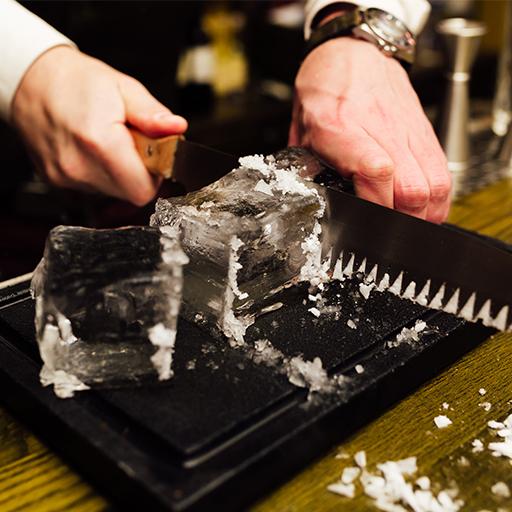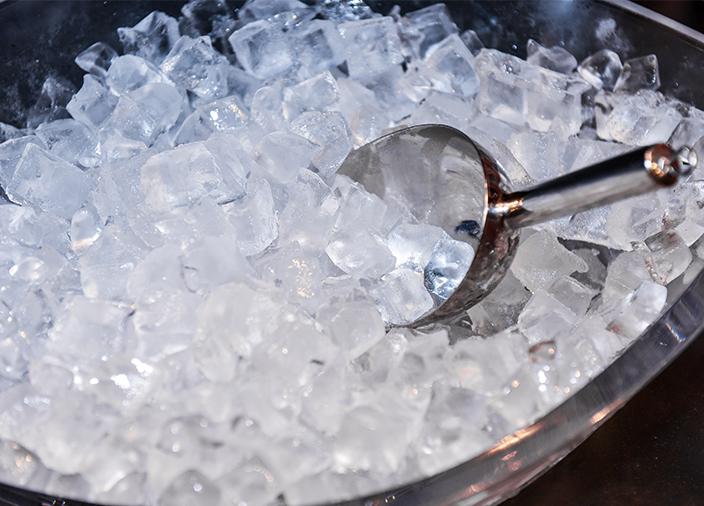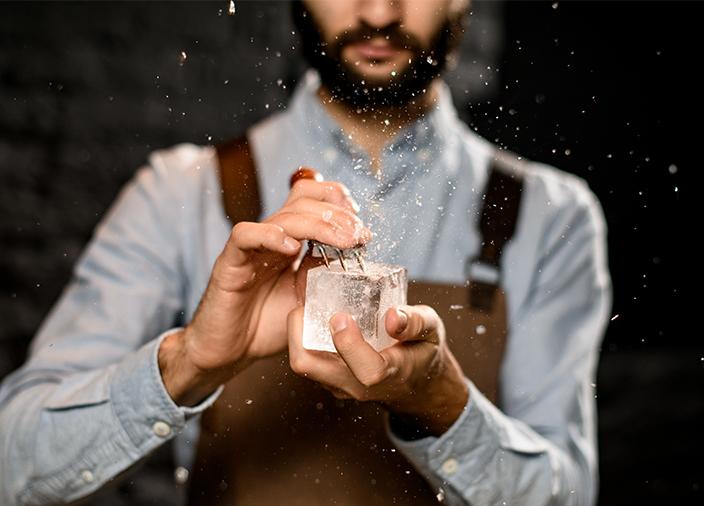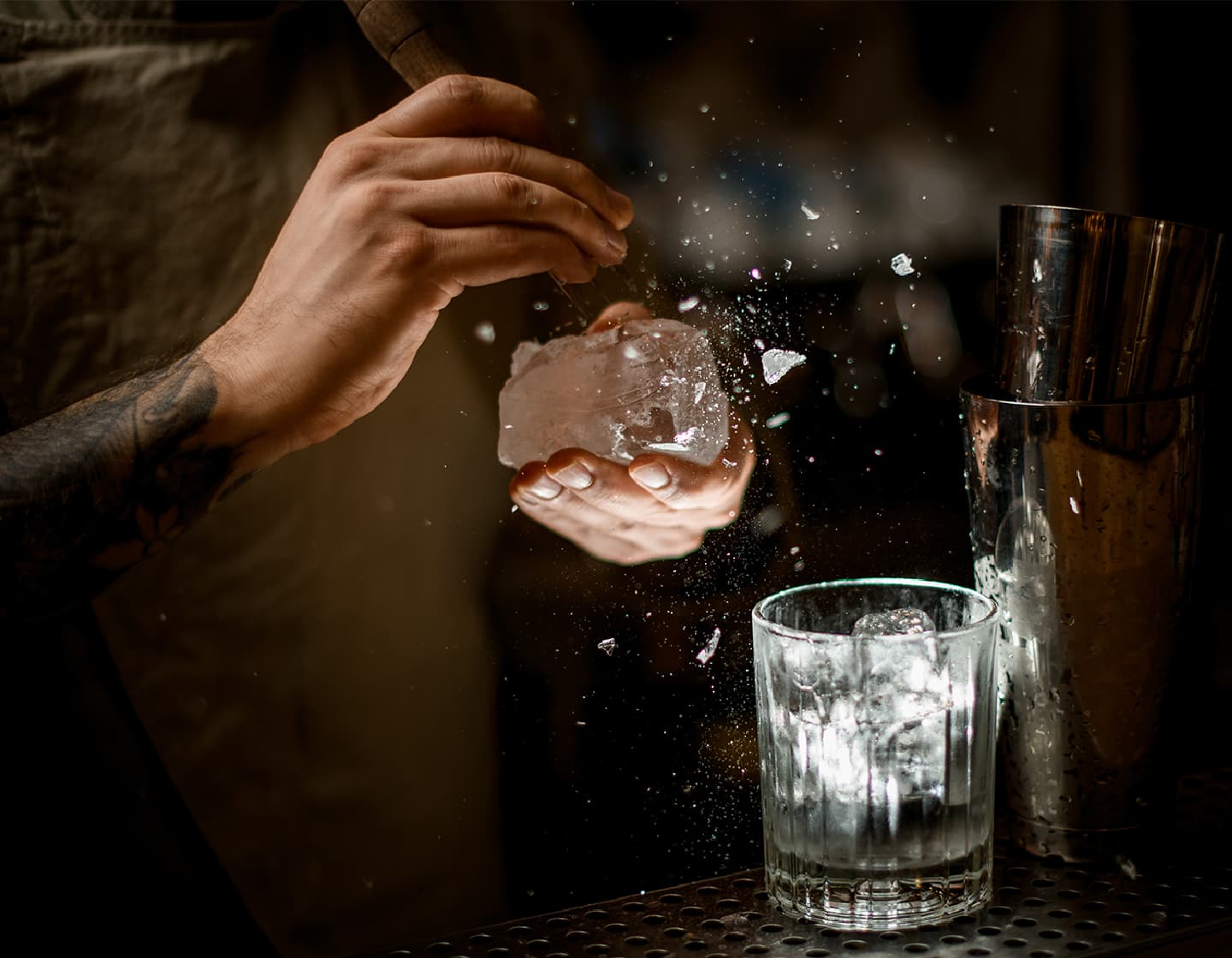Bar Skills: Ice Cutting And Carving Guide
Explore the captivating world of ice cutting and carving in drinks making and discover how this Japanese legacy can unlock unparalleled cocktail craftsmanship.
Estimated reading time: 3 minutes
In the early 21st century, Japanese bartending took the cocktail world by storm. The dedication to precise technique, high-quality tools and imaginative use of ice was a revelation to many Western bartenders.
Delve into the origins, essential tools, and imaginative styles that have elevated ice from a chilling agent to an exciting and purposeful centrepiece of many crafted cocktails.

Origins of Ice Carving
When ice became a common feature in bars, it was shipped and stored as large, solid blocks. Early cocktail bartenders quickly became adept at cutting and chiselling ice into smaller chunks for beverage use.
As convenience ice became more common – produced in ready-made small cubes, the art of hand-cut ice was largely forgotten. However, Japanese bartenders maintained the practice and over the years, a culture of ritualised, precise hand-carving developed.
With the rise of social media, hand-cut spheres, diamonds and large cubes arrived on the global cocktail scene. This innovative approach captured the imagination of bartenders and guests and, at a more technical level, sparked a deeper understanding of the importance of ice in cocktails.
Today, many bars worldwide feature clear, solid ice in various shapes and sizes and many embrace hand-cutting and carving as part of the cocktail experience.
The ice artisan's toolkit is as varied as it is specialised:
- Ice Picks: For breaking down large blocks and initiating cuts.
- Saws: Offering precision for cutting straight lines and larger segments.
- Chisels: Used for detailed carving and achieving specific shapes.
- Melting Tools: Heated metal tools that help smoothen or create intricate designs.
- Ice Moulds: For creating consistent, standardised shapes.
- Ice Press: A device that moulds ice into spheres using heat and pressure.

Styles and Forms of Ice
The realm of ice artistry boasts an array of styles, each with purpose and charm:
- Clear Blocks: Achieved by directional freezing, these pristine blocks are the canvas for breaking down into specialised shapes.
- Spheres: Minimising surface area for slower dilution makes this shape perfect for whiskies and premium spirits.
- Pillars & Spears: Tall, slender ice pieces ideal for highball glasses.
- Diamonds & Pyramids: Geometric wonders that add a touch of luxury.

Ice Carving Techniques
- Clear Ice: The starting point for ice carving is to have clear ice. Cloudy ice has air bubbles and cracks that will shatter when carving. A method to achieve crystal-clear ice is by freezing water in one direction and pushing impurities to the opposite end.
- Temperature Regulation: Carving is best done at specific temperatures; too cold and the ice might shatter; too warm, and it might melt too quickly.
- Safety First: Gloves, eye protection, and proper training are essential to handle tools safely.
- Waste Minimisation: Skilled bartenders plan their cuts to maximise usage and minimise wastage.
Level Up Your Ice Carving Skills
Considering the central role of ice in cocktail-making, developing ice-carving skills can add another level of excellence to a bartender’s repertoire.
- Ice Programs: Premium bars boast dedicated ice programs, ensuring each drink gets its fitting icy companion.
- Ice Workshops: Curious enthusiasts can now learn the basics of ice artistry in workshops, reflecting the craft's growing popularity.
- Competitions: Global competitions showcase bartenders' ice carving skills, celebrating precision and creativity.
Key Takeaways
- The craft of hand-cutting ice from large blocks dates to the earliest days of iced cocktails; this art was preserved and refined in Japan even as convenience ice cubes became popular.
- The tools used for ice artistry range from ice picks and saws for breaking down blocks to melting tools for detailed designs.
- Ice carving involves understanding the ice's quality (clear ice is optimal), regulating temperature during carving, practising safety and minimising wastage.
- Ice carving has gained such prominence today that premium bars offer specialised ice programs, workshops are available for enthusiasts, and global competitions celebrate the craft's precision and creativity.
With tools as diverse as the ice itself and techniques rooted in precision and creativity, the Japanese legacy of ice carving continues to thrive worldwide. Embracing this fine art adds an exciting visual appeal, enhances the guest's drinking experience and demonstrates an exceptional level of cocktail-making.
Get free access to bar skills training and stay ahead of industry news and trends when you sign up as a Diageo Bar Academy member.
